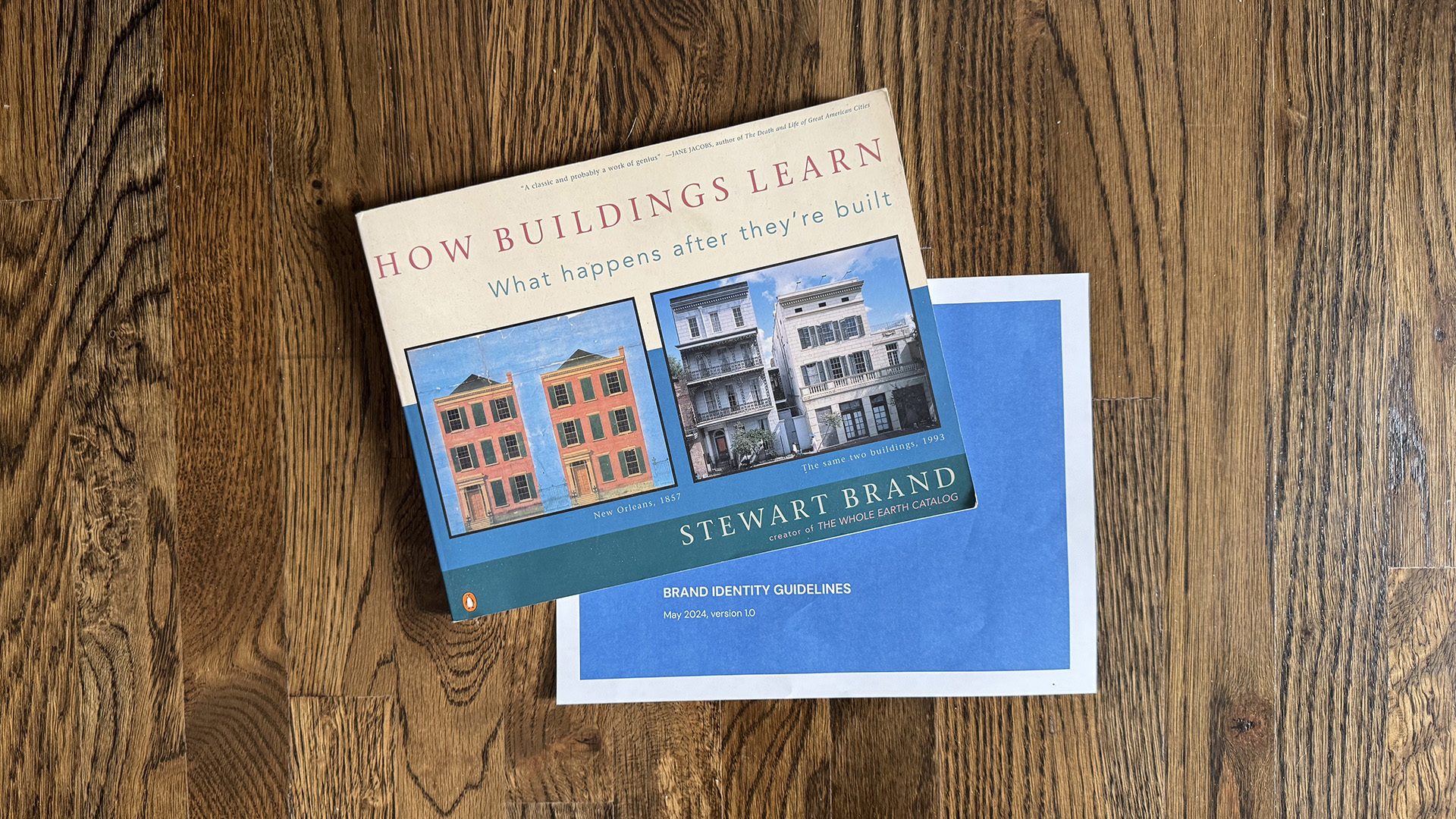The many lifespans of a visual system
September 8, 2025

Stewart Brand’s fascinating book, How Buildings Learn, which looks at how buildings adapt to changing needs and technology over time, provides some insights that are very useful when thinking about brands and visual systems and the ways they need to adapt over time.
Brand begins with British architect and theorist Frank Duffy’s work on change rate in buildings, and expands on it, focusing on “six S’s” of architecture:
SITE: the geographical setting of a building.
STRUCTURE: The foundation and load-bearing aspects of a building.
SKIN: The external surfaces of a building.
SERVICES: The working “guts” of a building: electrical and communications wiring, plumbing, HVAC, elevators, etc.
SPACE PLAN: Interior layout; walls, ceilings, etc.
STUFF: Chairs, desks, phones, etc.
These different elements age at very different rates; Site is more or less eternal, and structure usually lasts 50 years or much, much longer, but Services (7–15 years), Space Plan (3 years) and Stuff (weeks/months) change much more quickly. The great challenge is for these elements, with their different lifespans, to work together. As Brand concisely states:
“A design imperative emerges: An adaptive building has to allow slippage between the differently-paced systems of Site, Structure, Skin, Services, Space Plan, and Stuff. Otherwise the slow systems block the flow of the quick ones, and the quick ones tear up the slow ones with their constant change. Embedding the systems together may look efficient at first, but over time it is the opposite, and destructive as well.”
Thinking of a visual system as a combination of elements that age at very different rates is important to remember, whether you are building a visual system from scratch, refreshing a system, or extending it. If the logo is something akin to the building in this metaphor, it must allow for future growth and development. It needs to be flexible, able to work in a wide variety of applications, both current and future. For example, a logo designed in 2005 that relied on an unusually long, horizontal shape for its visual distinction would have been difficult to work with even then, and has become even more problematic in recent years with the rise of square formats on social media.
To expand on the metaphor, the “six S’s” in architecture would correspond to brands and visual systems thusly:
SITE: The brand position and core values, which define the company and the strategy that underpins the visual system. The lifespan of the site should be measured in decades.
STRUCTURE: The logo. This should last nearly as long as the site. Chopping and changing on the logo suggests that there are deeper brand and core value issues that are being papered over.
SKIN: Logo variations, taglines, usage rules. These should last the better part of the decade, and great care should be taken in changes, especially in the creation of sub-brands and taglines which requires discipline to avoid creating an overcomplicated labyrinth of variations.
SERVICES: Color palette, typography, photography usage, iconography style. The primary colors and typeface should last as long as the “skin”, but tweaking and adding to the secondary and tertiary color palettes and niche typefaces is usually a necessary part of the initial implementation of a new visual system. In an ideal world, every need would be anticipated in advance, but during the implementation process it’s important to show flexibility when addressing unexpected needs.
SPACE PLAN: The most visible elements of the visual system; website, PowerPoint presentations, major printed pieces, and to a lesser extent, business cards and letterhead. The lifespan of these should be measured in years.
STUFF: Campaigns, be they digital banners, sales sheets, social media, timely brochures last months. They should be refreshed regularly, and a strong visual system will have the flexibility that allows for fresh ideas that are still on brand.
When creating/refreshing/extending visual systems, it is wise to remember the words of architectural theorist Christopher Alexander: “What does it take to build something so that it’s really easy to make comfortable little modifications in a way that once you’ve made them, they feel integral with the nature and structure of what is already there?”
To build a visual system that can adapt and grow, avoid the temptation to create core elements that conflate aesthetic distinction with extremely straitened design possibilities. Otherwise, the system will crack and break, and it will need to be replaced far too early.